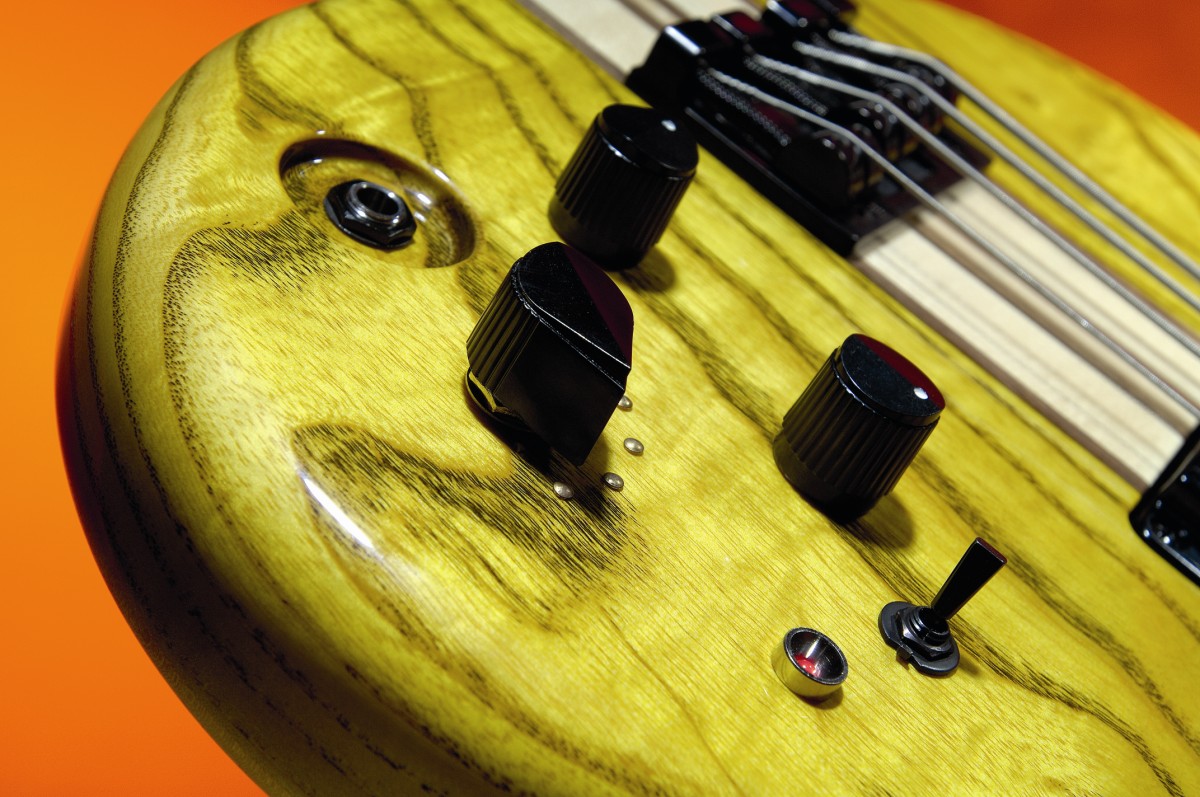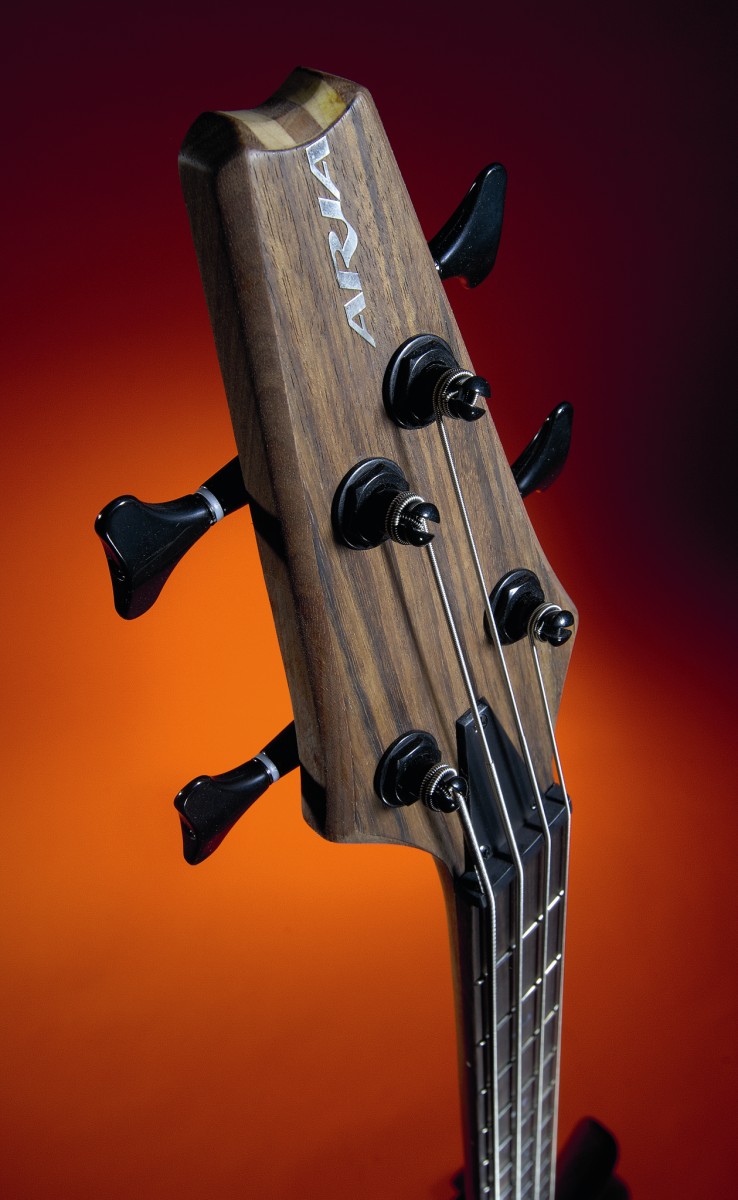MusicRadar Verdict
Although this carries the JT connection, there is nothing obvious to make this a signature model. If you want a classic bass with a definitive sound then this version certainly fits the bill perfectly. It is a super bass that is beautifully built and a joy to play.
Pros
- +
Great looks. unique sound. Good neck profile and ebony board.
Cons
- -
Alternative hardware will not appeal to all.
MusicRadar's got your back

Aria SB-1000JT

Aria SB-1000JT
At the beginning of the eighties Aria made some seriously good instruments - not least the SB-1000. There have been reissues of the original SB-1000 'masterpiece' over the years, but now Aria have decided to reproduce the bass that John Taylor used to help create Duran Duran's distinctive sound.
Design and construction
The shallow profile, ebony fingerboard and cleanly rolled edges mean that this full-scale neck is slim and smooth to the touch and offers superb access to every one of its 24 frets. In fact, in spite of the JT suffix, there's little here that seriously deviates from the original design.
Its distinctive shape, multi-laminate through-neck build, brass nut and innovative active electronics stay intact and it even sports the Aria Pro II logo on the pitched headstock.
The only noticeable difference comes in the shape of the black Gotoh bridge/tailpiece and tuners - specially chosen by John Taylor.
This easy string-change bridge is a proven design and serves the same purpose as the original but with side slots rather than those keyhole cut-outs for string anchoring.
The advantage here is that it will accept a lot more makes of string, plus it sports four huge saddles that not only support the stings well but also add weight to the sound.
The surface-mounted controls and recessed jack socket are much as they were on the original model; although the BB circuit bypass switch is a sensible addition and allows the more natural-sounding single pickup nature of the bass to also be enjoyed.
Want all the hottest music and gear news, reviews, deals, features and more, direct to your inbox? Sign up here.
Aria has even included the brass pins that act as position markers for the six-way rotary selector. They are superfluous, but it's a rather nice touch.
Surface mounting allows for an unrestricted view of the body where the oak finish refers to the colour and not the type of wood used, which is predominantly ash.
Also the high gloss sheen allows the superb grain to be seen in all its glory. At the rear, the control cavity is accompanied by a pair of battery compartments, indicating the power that's required for this highly effective active circuitry.
In use
This is a long bass visually so the last thing you'd expect is good instrument balance, but that's what you get. It's a comfortable bass to play, too, in spite of the lack of contouring to the body surface - all part of the original design.
If you're unfamiliar with ebony fingerboards then this will surprise and delight you. It's silky and smooth, and with these minimal frets your fingers just glide over the strings while those upper frets have genuinely never been easier to reach.
For a single pickup bass to survive in the eighties it had to have some intelligent circuitry to provide the cut and projection that was expected and this bass has never disappointed. Plugging in illuminates the red LED and lift-off begins.
The SB-1000JT has a strong basic sound system thanks to the sensitive tone control that sweeps from a warm sound through to a throaty growl with several pleasing blends along the way.
This in itself will satisfy many players, but when you kick in the BB circuit and bring the selector into play a whole new world of sound is released.
The six-way switch of the SB-1000JT allows you to take full advantage of the active circuit by letting you gradually pile on more tonal shapes and intensity.
This is very effective and goes much further than you could imagine - defying the fact that there is only the one pickup. It even manages to progressively 'hollow out' as you dial through the pre-sets.
Although it's obviously not as dynamic an effect as can be achieved with a pair of pickups, it does mean the bass has a very distinctive voice - relatively few basses can make that claim honestly.
The tone control is much less effective in this mode but the six options provide more than enough variation and the tone is merely used for a final tweak.
All in all there are plenty of options available and there's a clarity to the overall tone that ensures every note will be heard.
Guitarist is the longest established UK guitar magazine, offering gear reviews, artist interviews, techniques lessons and loads more, in print, on tablet and on smartphones
Digital: http://bit.ly/GuitaristiOS
If you love guitars, you'll love Guitarist. Find us in print, on Newsstand for iPad, iPhone and other digital readers
